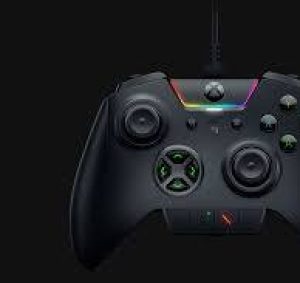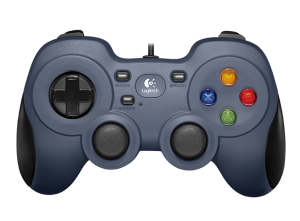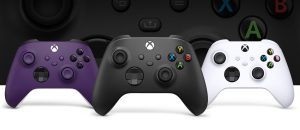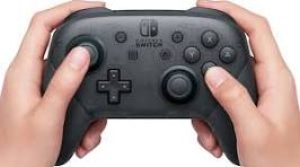In the dynamic world of gaming, the controller is a crucial tool that significantly impacts the player’s experience. With advancements in technology, game controllers have evolved to provide enhanced functionality, comfort, and precision. This article delves into the best-selling controllers for game devices, exploring their uses, top products, mode of action, how to use them, advantages, disadvantages, user experience, cost, accessibility, technical specifications, and research evidence.
1. Uses of Game Controllers
Game controllers are essential peripherals for gaming consoles and PCs, designed to facilitate the interaction between the player and the game. They provide a more immersive and responsive gaming experience, enabling players to execute complex commands and maneuvers with ease. Controllers are used in various gaming genres, from first-person shooters and racing games to sports simulations and action-adventure titles.
2. Top 5 Best-Selling Game Controllers
- Platform: PlayStation 5
- Features: Haptic feedback, adaptive triggers, built-in microphone, and motion sensors.
- Platform: Xbox Series X|S, Xbox One, Windows 10
- Features: Textured grip, hybrid D-pad, Bluetooth support, and compatibility with multiple devices.
- Platform: Nintendo Switch
- Features: Motion controls, HD rumble, built-in amiibo functionality, and ergonomic design.
- Platform: Xbox Series X|S, Xbox One, PC
- Features: Interchangeable thumbsticks and D-pad, remappable buttons, RGB lighting, and trigger stops.
- Platform: PC
- Features: Familiar layout, customizable controls, and broad game support.





- Mode of Action
Game controllers operate through a combination of buttons, joysticks, triggers, and other input mechanisms that translate the player’s actions into digital signals understood by the gaming device. These signals are transmitted either wirelessly or through a wired connection. Advanced controllers feature haptic feedback and adaptive triggers, which provide tactile sensations that mimic in-game actions, enhancing immersion.
- How to Use Game Controllers
Using a game controller is straightforward:
- Connect the Controller: Pair the controller with the gaming device via Bluetooth, a wireless dongle, or a USB cable.
- Configure Settings: Adjust settings such as button mapping, sensitivity, and vibration intensity through the device’s settings menu or accompanying software.
- Launch a Game: Start a game and use the controller’s buttons, joysticks, and triggers to interact with the game world.
- Regular Maintenance: Keep the controller clean and ensure it has adequate battery life for wireless models.
- Advantages of Game Controllers
- Ergonomics: Designed for comfort during extended play sessions.
- Precision: Offers precise control for in-game actions.
- Immersion: Haptic feedback and adaptive triggers enhance the gaming experience.
- Compatibility: Many controllers are compatible with multiple devices and platforms.
- Customization: Some models allow button remapping and trigger adjustments.
- Disadvantages of Game Controllers
- Price: High-end controllers can be expensive.
- Durability: Frequent use can lead to wear and tear.
- Compatibility Issues: Not all controllers are compatible with every game or device.
- Battery Life: Wireless controllers require regular charging.
- Complexity: Advanced features can be overwhelming for new users.
- User Experience
User experiences with game controllers vary based on personal preferences, gaming habits, and the specific controller model. Generally, users appreciate ergonomic designs, responsive controls, and features like haptic feedback and adaptive triggers. Reviews often highlight the comfort during long gaming sessions and the added immersion from advanced features. However, some users report issues with durability and the need for frequent charging in wireless models.
- Cost and Accessibility
The cost of game controllers ranges from affordable to premium, depending on the features and brand. Basic models like the Logitech F310 are budget-friendly, while advanced controllers like the Razer Wolverine Ultimate can be more expensive. Accessibility varies by region, but major retailers and online platforms typically offer a wide selection. Additionally, refurbished and second-hand options provide more affordable alternatives.
- Technical Specifications
Sony DualSense Wireless Controller
- Dimensions: 160mm x 66mm x 106mm
- Weight: 280g
- Connectivity: Bluetooth 5.1, USB Type-C
- Battery Life: Up to 12 hours
- Features: Haptic feedback, adaptive triggers, built-in microphone
Microsoft Xbox Wireless Controller
- Dimensions: 153mm x 61mm x 102mm
- Weight: 244g
- Connectivity: Bluetooth, USB-C, Xbox Wireless
- Battery Life: Up to 40 hours with AA batteries
- Features: Textured grip, hybrid D-pad
Nintendo Switch Pro Controller
- Dimensions: 152mm x 106mm x 60mm
- Weight: 246g
- Connectivity: Bluetooth 3.0, USB-C
- Battery Life: Up to 40 hours
- Features: Motion controls, HD rumble
Razer Wolverine Ultimate
- Dimensions: 106mm x 66mm x 156mm
- Weight: 272g
- Connectivity: Wired USB
- Features: Interchangeable thumbsticks, RGB lighting
Logitech F310 Gamepad
- Dimensions: 153mm x 96mm x 63mm
- Weight: 210g
- Connectivity: Wired USB
- Features: Customizable controls, broad game support
- Research and Evidence
Research on game controllers often focuses on ergonomics, user satisfaction, and the impact of advanced features on gaming performance. Studies have shown that ergonomic designs can reduce strain and fatigue during prolonged use, while haptic feedback and adaptive triggers enhance immersion and responsiveness. User reviews and market analysis provide evidence of the popularity and performance of best-selling models, indicating a preference for controllers that balance comfort, functionality, and advanced features.
Conclusion
Choosing the right game controller can significantly enhance your gaming experience. The top five best-selling controllers—Sony DualSense, Microsoft Xbox Wireless Controller, Nintendo Switch Pro Controller, Razer Wolverine Ultimate, and Logitech F310—each offer unique features and benefits. By understanding their uses, mode of action, how to use them, advantages, disadvantages, user experiences, cost, accessibility, technical specifications, and the research backing their effectiveness, you can make an informed decision that suits your gaming needs and preferences. Whether you’re a casual gamer or a competitive player, the right controller can make all the difference.






